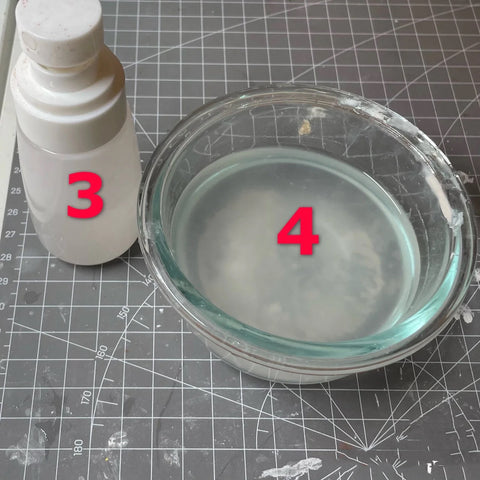
PAINTING FACES ON BJD DOLL
One of the trickier parts of making a doll, whether you're sculpting or painting it, is recreating life-like features on the face. I've seen some of my students and fellow doll makers struggle with this. Painting can help your sculpture look more lively and realistic - so how do you do it? Today I want to share some tricks that will make painting faces easier and more fun!
The Individual Layers of a Woven Fabric
Painting is made up of a few fairly simple rules. The main rule? Painting in layers. This keeps the sculpture from looking flat and maintains the depth of color. To paint in layers, you should use translucent paints for porcelain dolls, or soft pastels and watercolors for resin, air-dry clay dolls. The goal is to build up depth by adding more and more layers with each subsequent layer. Seal each layer as you go so that the work doesn't start to flake off. If you're painting porcelain dolls, fire every new layer of China paints in the kiln to get the desired effect. It’s likely that one face will take about six to eight layers. If you're using something like soft pastels and watercolor paints, seal each layer with a matte spray varnish so that it becomes brighter and doesn't cause previous layers to lift off while applying later coats.
three
One tip that has helped me to draw more expressive and realistic eyes is understanding that every eye has a light and dark area, or high-key and low-key. I study illustrations and photographs of eyes to see how shadows and highlights create depth in the iris. Drawing tutorials are good for this too!
When painting a doll, it's important to work in layers. This can help make finding the right color easier and developing details more visible. For this iris, I start with a base of pale blue. With each layer, I deepen the depth of colors and build the final makeup for the doll.
We're going to place a black pupil in the middle of an iris. You can use it to blend the color into the shadows or add smaller strokes or dots to create a detailed texture.
The lower part of an eye is always brighter, so try to use lighter paints while adding highlights. Conversely, the dark contour around an iris will make your eyes really stand out.
I have eyebrows.

The most common mistake that I see artists make with painted eyebrows is not trying to define individual hairs and growing them in the wrong direction. I found these great charts that show how intricate the eyebrows can look. So if you're making a small doll, don't necessarily spend a ton of time painting every little hair by hand. Just try to include brush strokes that represent the direction of where your natural eyebrow hairs grow.
When you're painting, start at the root and paint to the direction they're growing. Always ensure that every stroke is intentional with a quick but decisive action. Remember not to press too hard - you don't want to pull or stretch the bristles! Be sure to cover all areas of the eyebrow; this helps keep it looking natural.
Low income people
Please leave any sentences to be reworded in the comments, and I'll fix them up as soon as I can.
When painting a model’s lips, I like to start with a general color and shadows. You need to remember that the upper lip will be darker because it is in the shadowed area. A properly sculpted upper lip will create the deepness naturally, but you can add deeper colors as well if you wish to further accentuate those features.
When adding highlights to your lipstick, imagine where the light will hit the lips. Generally, it's on the upper lip near the cupid's bow and on the lower lip in the middle. Some people also like to add some highlights around the corners of their lips. Painting in small strokes can be more natural-looking than painting with broad strokes, so consider adding strokes where you need them too.
Ladies and gentlemen, General Blush!

Shimmery blush can be very flattering, giving a lot of definition to your face. There are no hard-and-fast rules on how to do it (which is half the fun!), but I usually start with light brushing in the shadowed areas, and then add some color to the cheeks. So I would generally use shimmery blush around the eye area, along with others spots like under my lower lip, ears, nose and temple. To keep things natural looking, don't overdo it - as I find two layers is usually enough to get good definition.
Here are a few tips that will come in handy when it comes to painting. If you're just getting started, keep experimenting with different techniques and remember - always paint in layers!

EDELWEISS
